

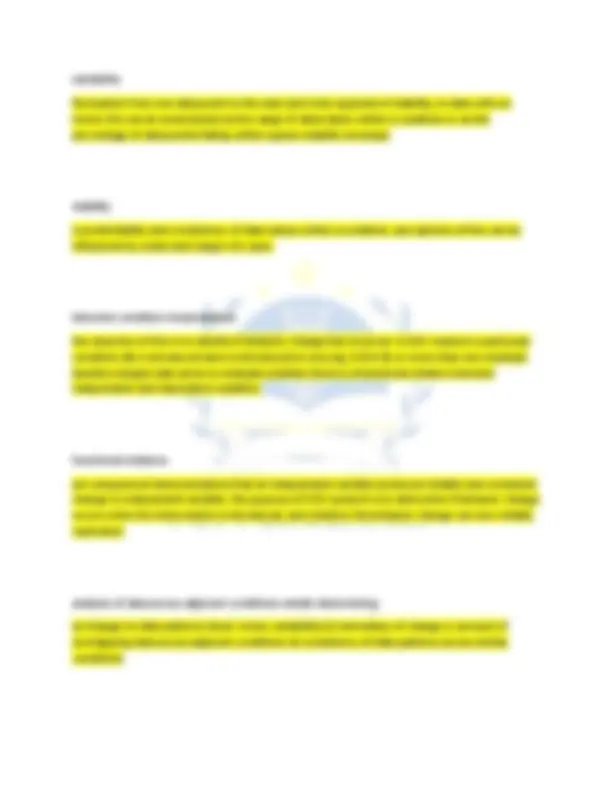

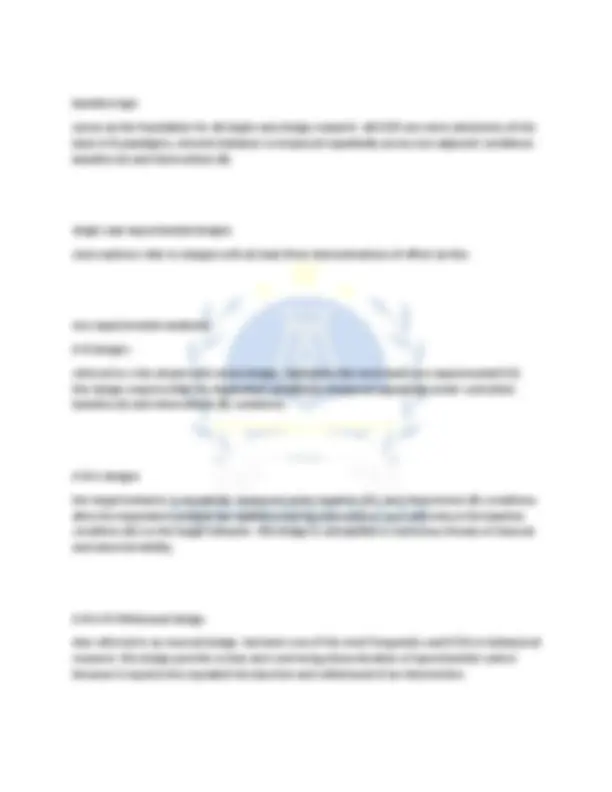
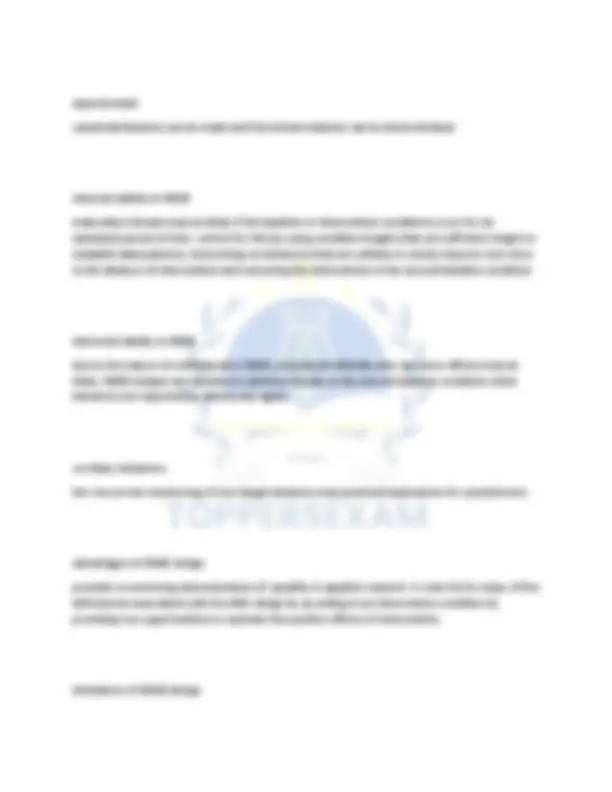
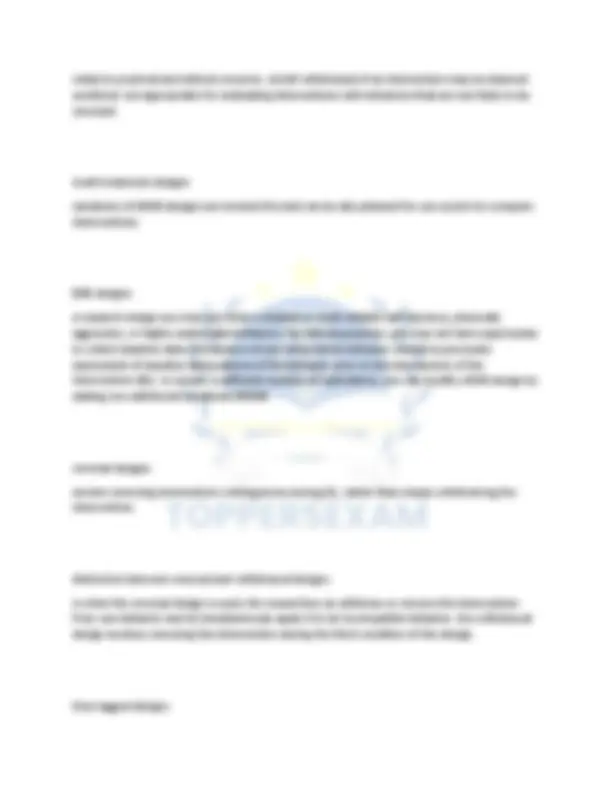
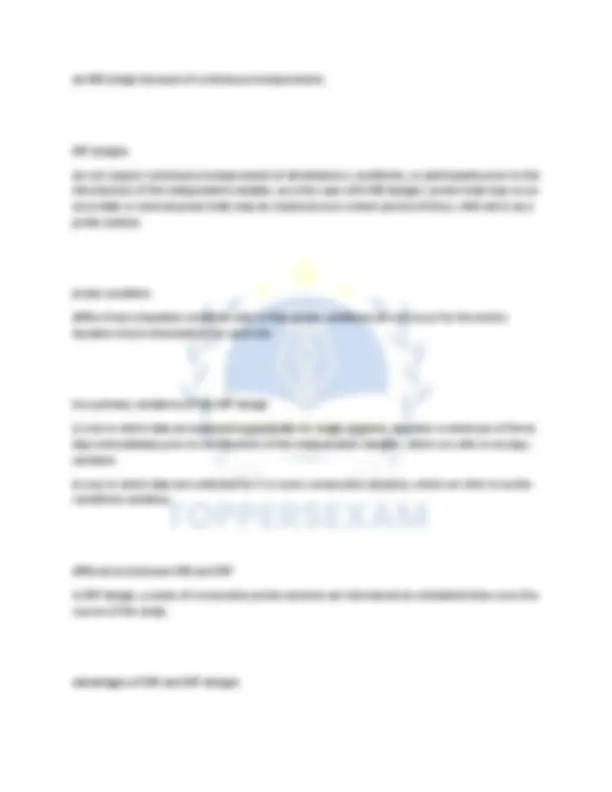

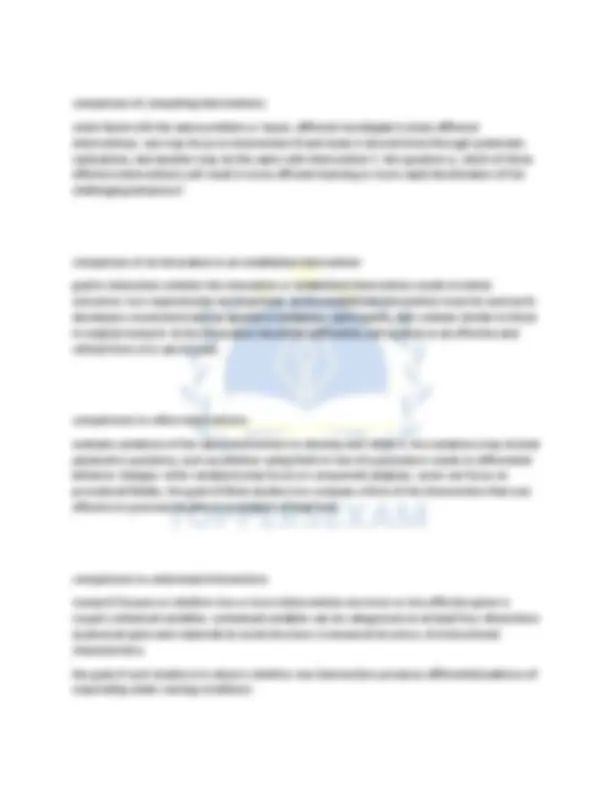
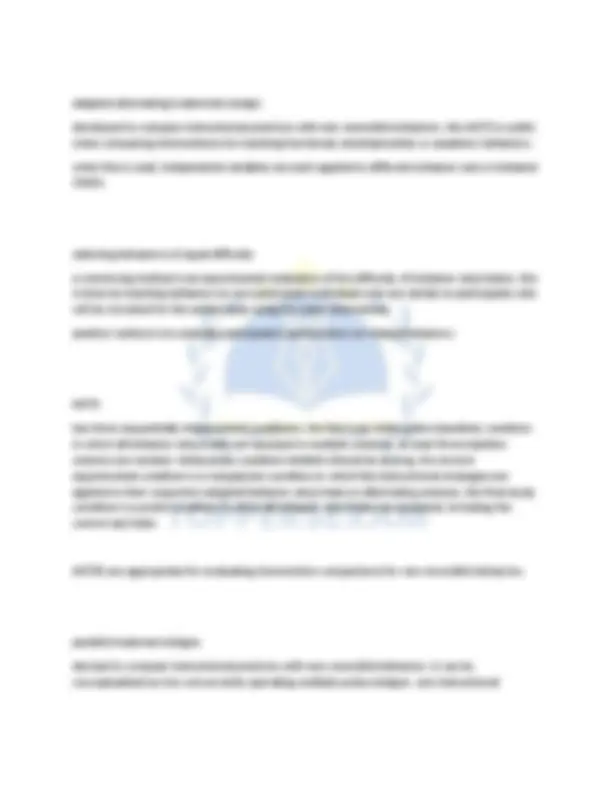


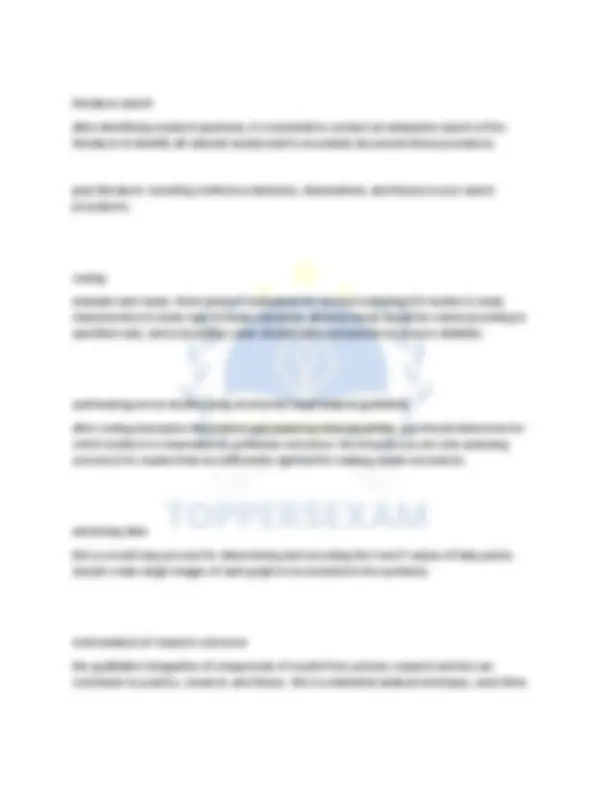
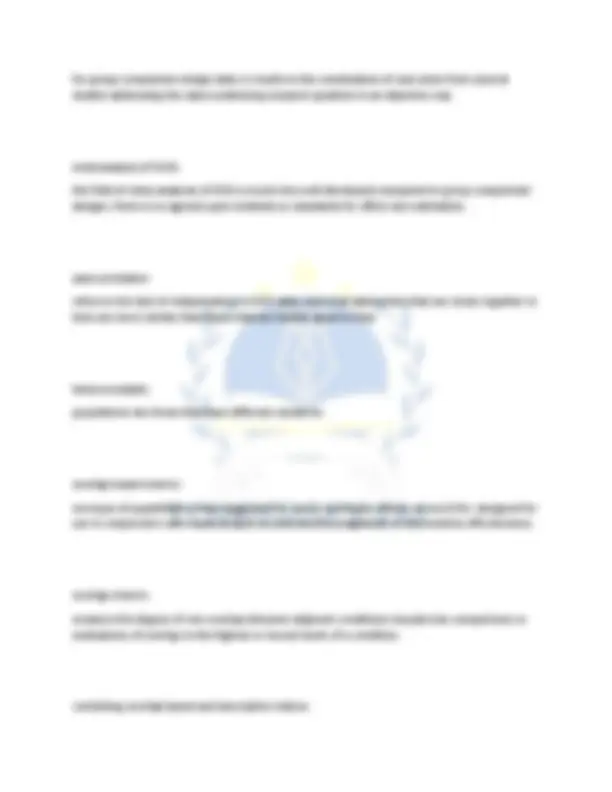
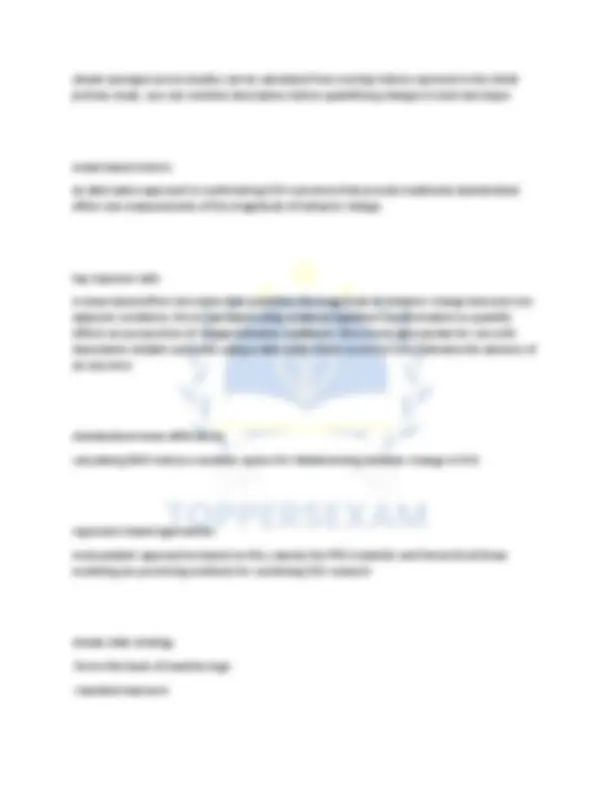

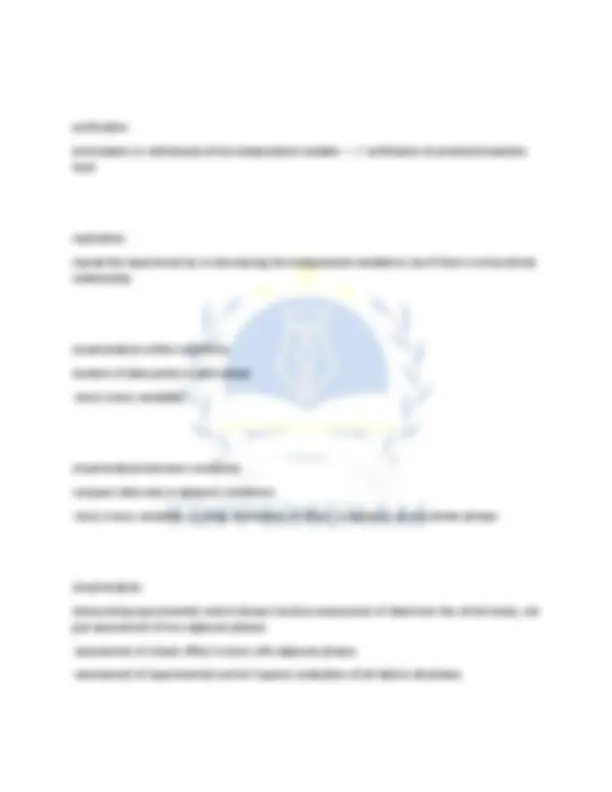
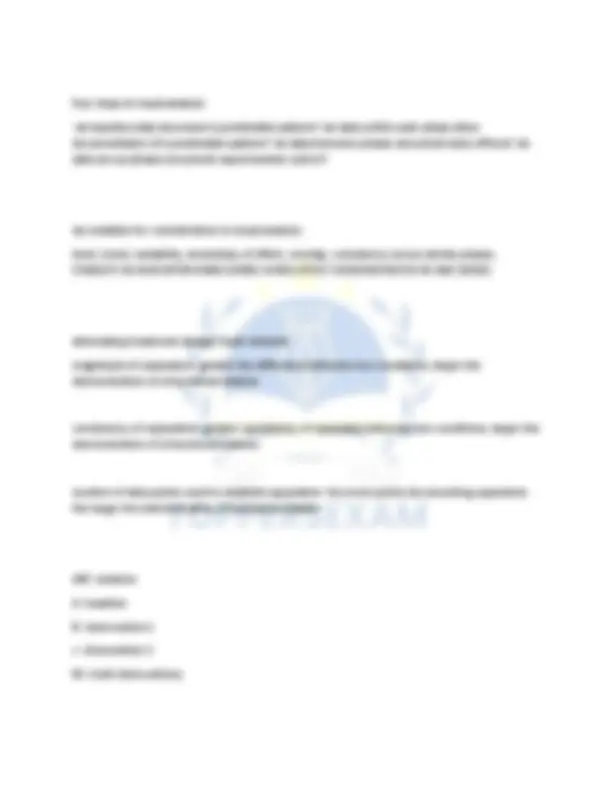
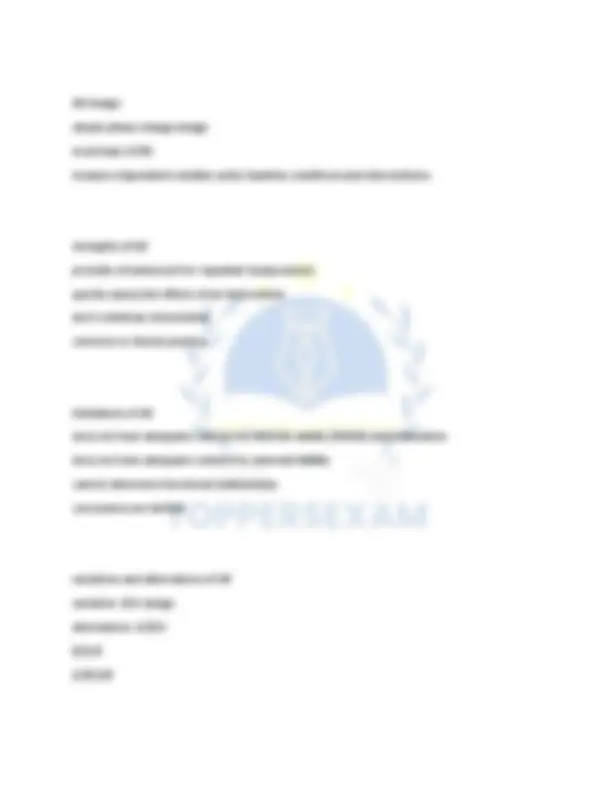
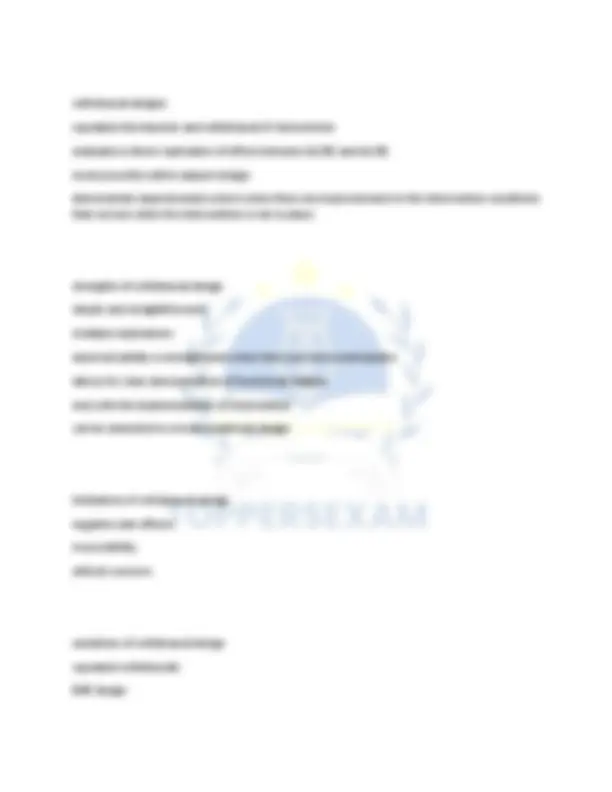
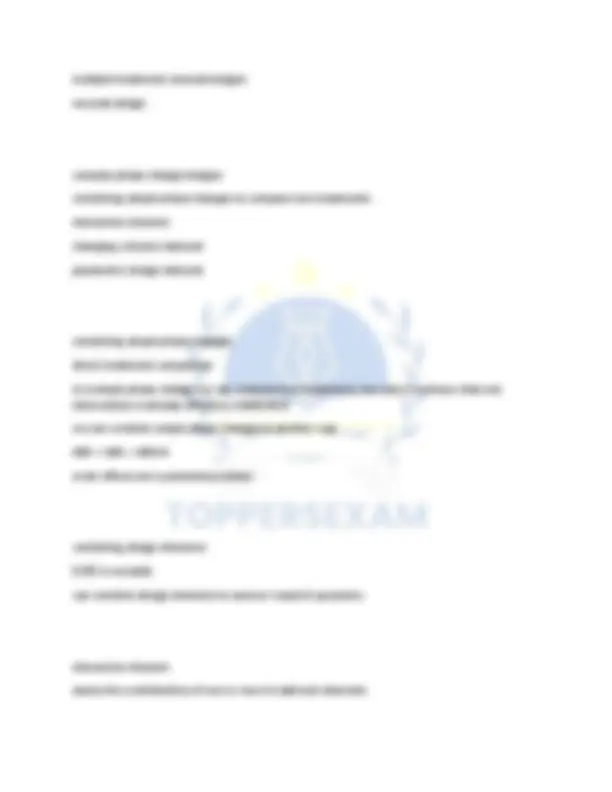



Study with the several resources on Docsity

Earn points by helping other students or get them with a premium plan


Prepare for your exams
Study with the several resources on Docsity

Earn points to download
Earn points by helping other students or get them with a premium plan
Community
Ask the community for help and clear up your study doubts
Discover the best universities in your country according to Docsity users
Free resources
Download our free guides on studying techniques, anxiety management strategies, and thesis advice from Docsity tutors
SPCE 630 Final Exam 2024 PRE TEST GRADED A+ (COMPLIED FROM REAL EXAM)
Typology: Exams
1 / 30

This page cannot be seen from the preview
Don't miss anything!























visual analysis of graphed data is the cornerstone of and most frequently used data analysis method in SCD research, particularly for determining whether a study demonstrates experimental control. involves systematic procedures used to evaluate specific characteristics of data patterns and evaluate the presence of a functional relation. advantages of visual analysis
occurs when data patterns in one condition are different from data patterns in the subsequent, adjacent condition for the same variable(s). summative visual analysis conducted following study completion, across multiple opportunities to demonstrate behavior change to determine whether a functional relation exists between the independent variable and the dependent variable. adjacent conditions in SCD research, data patterns are examined within and across adjacent conditions; when data in one condition differ from what is predicted based on the preceding condition, behavior change is demonstrated. formative analysis is conducted in two steps
variability fluctuation from one data point to the next and is the opposite of stability; in data with no trend, this can be summarized as the range of data values within a condition or as the percentage of data points falling within a given stability envelope stability is predictability and consistency of data values within a condition. perceptions of this can be influenced by scales and ranges of y axes. between condition visual analysis the objective of this is to identify if behavior change has occurred. in SCD research a particular condition (B) is introduced and re-introduced to one (eg. A-B-A-B) or more than one (multiple baseline design) data series to evaluate whether there is a functional relation between independent and dependent variables. functional relations are unequivocal demonstrations that an independent variable produced reliable and consistent change in a dependent variable. the purpose of SCD research is to determine if behavior change occurs when the intervention is introduced, and whether the behavior change can vive reliably replicated. analysis of data across adjacent conditions entails determining: a) changes in data patterns (level, trend, variability) b) immediacy of change c) amount of overlapping data across adjacent conditions d) consistency of data patterns across similar conditions
immediacy of change across adjacent conditions is the degree to which behavior change occurs as soon as the intervention is introduced. when a large change in level occurs immediately after introduction of a new condition, it is referred to as an abrupt change in level, which is indicative of an immediately powerful or immediately effective intervention. overlap refers to values of data in one condition that are in the same range of values of data in the subsequent, adjacent condition. consistency refers to the extent to which data patterns in one condition are similar to data patterns in other conditions. confident determination that a functional relation exists requires consistency in data patterns between iterations of the same condition and inconsistency in data patterns between different, adjacent conditions. potential demonstrations of effect a functional relation can be identified when a) there is a sufficient number of this (three opportunities to demonstrate behavior change contingent on condition change) and b) visual analysis suggests that consistent changes in data occur for all potential demonstrations the presence of a functional relation can be confirmed when a) there is a successful attempt to replicate effects of a condition b) similar conditions generate similar levels and trends within (intra participant replication) and across (inter participant replication) participants in a study. a minimum of three demonstrations of behavior change is required to establish experimental control
identifying design related criteria a) minimum number of sessions per condition and b) explicit criteria for changing conditions summative analysis should focus on a) within condition data patterns were stable b) hypothesized between condition shifts in data patterns were detected and c) these shifts consistently co occurred with each change in condition split middle method a tool that can be used to estimate trend within conditions and compare trends between conditions. these are most useful when within condition trends or between condition changes in trend are of primary interest and data show moderate or high variability within conditions. stability envelopes can be used to estimate stability in level or trend within conditions. the primary advantage of this is to ensure consistency in experimental decisions related to data stability. percentage of non overlapping data may be used to estimate level change between two adjacent conditions. the higher the PND, the more consistent and abrupt the level change between adjacent conditions. a PND of 100% indicates no overlap in the ranges of values between two adjacent conditions.
baseline logic serves as the foundation for all single case design research. all SCDS are mere extensions of the basic A-B paradigms, wherein behavior is measured repeatedly across two adjacent conditions: baseline (A) and intervention (B). single case experimental designs some authors refer to designs with at least three demonstrations of effect as this. non experimental variations A-B designs referred to s the simple time series design, represents the most basic non experimental SCD. this design requires that the dependent variable be measured repeatedly under controlled baseline (A) and intervention (B) conditions. A-B-A designs the target behavior is repeatedly measured under baseline (A1) and intervention (B) conditions. after the dependent variable has stabilized during intervention, you reintroduce the baseline condition (A2) to the target behavior. this design is susceptible to numerous threats of internal and external validity. A-B-A-B Withdrawal design also referred to as reversal design, has been one of the most frequently used SCDs in behavioral research. this design permits a clear and convincing demonstration of experimental control because it requires the repeated introduction and withdrawal of an intervention.
relate to practical and ethical concerns. a brief withdrawal of an intervention may be deemed unethical. not appropriate for evaluating interventions with behaviors that are not likely to be reversed. multi treatment designs variations of ABAB designs are termed this and can be also planned for use a priori to compare interventions. BAB designs a research design you may use when a student or client exhibits self injurious, physically aggressive, or highly undesirable behaviors. for ethical purposes, you may not have opportunity to collect baseline data. the absence of pre intervention behavior measures precludes assessment of baseline data patterns of the behavior prior to the introduction of the intervention (B1). to ensure a sufficient number of replications, you can modify a BAB design by adding two additional conditions BABAB. reversal designs involve reversing intervention contingencies during A2, rather than simply withdrawing the intervention. distinction between reversal and withdrawal designs is when the reversal design is used, the researchers a) withdraw or remove the intervention from one behavior and b) simultaneously apply it to an incompatible behavior. the withdrawal design involves removing the intervention during the third condition of the design. time lagged designs
a class of designs well suited for evaluating and demonstrating accountability in clinical and educational settings. there are two widely used variations of time lagged designs: multiple baseline (MB) and multiple probe (MP) designs. MP and MB both involve assessing multiple AB comparisons by implementing A to B condition changes at three or more different points in time for three or more targets rather than introducing and withdrawing the intervention with a single target continuous measurement refers to the planned implementation and data collection during each opportunity or session. differences between MP and MB the frequency with which pre intervention data are collected. MB requires continuous measurement of all targets prior to the introduction of the independent variable. MP design is to collect data intermittently prior to the introduction of the intervention three principal variations of MB and MP designs
an MB design because of continuous measurement, MP designs do not require continuous measurement of all behaviors ,conditions, or participants prior to the introduction of the independent variable, as is the case with MB designs. probe trials may occur once daily or several probe trials may be clustered over a short period of time, referred to as a probe session. probe condition differs from a baseline condition only in that probe conditions do not occur for the entire duration of pre intervention for each tier. two primary variations of the MP design
both designs permit an evaluation and demonstration of intra participant direct replication. the MP design across behaviors provides a practical means for evaluating programs designed to teach academic and functional skills that are nonreversible once acquired. the conditions variation of the MP design across behaviors provides a paradigm for repeatedly monitoring progress over time. limitations of MP and MB these designs require specific guidelines that may present problems. for each participant, a minimum of three behaviors must be identified. all behaviors must be monitored repeatedly and concurrently, which may be time consuming. prolonged baseline conditions can result in testing threats to internal validity. may result in a facilitative or inhibitive effect. several strategies to implement to overcome limitations associated with MP and MB designs a) positively reinforce desired behaviors during pre intervention sessions. you can contingently reinforce target behaviors when performed correctly. using MB and MP designs across contexts you sequentially introduce the independent variable to the same behavior across several different stimulus conditions. these can encompass the dimensions of time, instructional arrangement, activity, setting, control agent when conducting comparative studies. some issues to consider are a) whether behaviors being studied are reversible b) time available for conducting the study c) number of accessible participants d) likely threats
comparison of popular and research based interventions when a widely used intervention with little or no research support is suggested for use it is prudent to compare the effects of the untested interventions with an intervention supported by research. assess the effectiveness of two different interventions, one research based and one widely used exist in the recent literature. these studies use a sequential demonstration approach or a comparison design. multi treatment interference the influence one experimental condition has on performance under another experimental condition. these effects can occur in demonstration designs, but they are more likely when the experimental conditions are both therapeutic in nature. carryover effects (multi treatment interference) the influence of one experimental condition on performance under another condition due to the nature of the initial condition sequence effects (multi treatment interference) the influence of one condition on another due to the ordering of experimental conditions. rapid alternation effects (multi treatment interference) the effects on performance due to rapidly changing conditions
non reversibility of effects when comparing two interventions, one threat to internal validity is this. it refers to the likelihood that once behavior change occurs, it will maintain even when the condition resulting in the behavior change is removed. separation of treatments issue most comparative studies are conducted to evaluate the superiority of one intervention over others. this occurs when using some comparison designs: when two or more interventions are applied to the same behavior, the ultimate levels of the behavior cannot be attributed to only one intervention. multi treatment designs variations of the ABAB design developed to compare treatments are called this. the simplest multi treatment design includes BCBC sequence. these designs require only one dependent variable, but more are recommended. these designs can be used with or without a baseline condition. useful for answering many research questions, including comparisons of two different interventions, analyses of components of treatment packages, and parametric analyses. alternating treatment designs and the multi element design are procedurally similar. this is used to compare interventions while the multi element design is used to assess factors that may be maintaining challenging behaviors. ATD uses rapid and repeated manipulation of at least two conditions. It might look like ABBAABBABAABAB ATD requires measurement of one reversible behavior. the purpose of the ATD variation is to compare two or more interventions.
strategy is evaluated with one multiple probe design, and the second is evaluated with another multiple probe design useful when comparing interventions for teaching functional, developmental, and academic behaviors. you should identify three or more behavior sets/chains for each instructional strategy being compared. changing criterion design this may be appropriate for practitioners and applied researchers who wish to evaluate instructional or therapy programs that require gradual, stepwise changes in behavior. this design can be used to increase or decrease behaviors already in a participants' repertoire. simultaneous treatments design have purpose of describing choice behavior when two concurrently available conditions exist. researchers can use this design when two or more options are simultaneously available and when a participants' choice between the options is of interest. these designs should be used when choice behavior is the dependent variable of interest. repeated acquisition designs one of the few SCDs appropriate for comparing interventions for teaching non reversible behaviors. used when the behaviors of interest will be quickly acquired by the participant, and when two interventions are being compared. when using this design, many behaviors should be identified. brief experimental design
a group of SCDs that are variations of commonly used designs, specifically withdrawal and alternating treatments design. the BE design requires fewer sessions. BE design may be preferable to the more usual Multi element designs when evaluating the results of a functional analysis by decreasing the probability of problem behavior associated with an extended multi element design combination designs common practice by researchers interested in the functional analysis of challenging behavior has been to combine an alternating treatments design with an ABA design. the decision to combine two SCDs should be made after recognition of the experimental analysis limitations of using one design alone and the advantages of combining two designs. synthesizing reviewing results of similar studies and drawing broad conclusions about the state of the evidence. one way to synthesize outcomes is via meta analysis, which is a technique for encoding and analyzing the statistics that summarize research findings as they are typically presented in research reports. purpose of summative evaluation of outcomes been conducted with the purpose of combining outcomes across multiple studies. the best summative evaluation of outcomes in a single study is a thorough and systematic explanation of a thorough and systematic visual analysis procedure. narrative reviews reviews based on common or uncommon elements of works without concern for research methods, designs, or settings; traditional literature review.